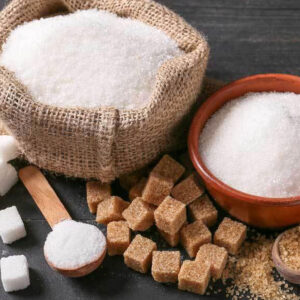When looking at beet sugar vs cane sugar, some argue that one melts better than the other.
When looking at beet sugar vs cane sugar, some argue that one melts better than the other.
Blog Article
Discover the Uses and Conveniences of Beet Sugar Vs Cane Sugar in Your Daily Diet
Exploring the distinct qualities of beet and cane sugar discloses more than just their sweetening capacities; it highlights their one-of-a-kind influence on wellness and cookeries. Beet sugar, known for its subtle flavor, is commonly preferred in fragile treats, whereas cane sugar, with its hint of molasses, adds richness to durable recipes. Each kind holds its own nutritional profile and glycemic ramifications, inviting a much deeper understanding of their duties in a balanced diet and sustainable intake techniques.
Origin and Production Processes of Beet and Cane Sugar

The distinct climates and soil kinds needed for growing sugar beetroots and sugarcane contribute to distinctions in their farming methods and geographical circulation, influencing the economics and sustainability of their manufacturing. beet sugar vs cane sugar.
Nutritional Comparison In Between Beet Sugar and Cane Sugar
In spite of originating from various plants, beet sugar and cane sugar are nutritionally really similar, both largely being composed of sucrose. Each supplies concerning 4 calories per gram, equating to approximately 16 calories per tsp. Structurally, both sugars are made up of around 99.95% sucrose, with marginal quantities of various other compounds like moisture and trace element, which do not dramatically change their dietary accounts.

Inevitably, when picking in between beet sugar and cane sugar based upon nutritional web content alone, both deal identical benefits and downsides as they are essentially forms of the very same molecule-- sucrose, supplying fast energy without various other nutrients.
Impact on Health And Wellness: Glycemic Index and Caloric Material
Discovering further into the effects of beet sugar and cane sugar on health and wellness, it is essential to consider their glycemic index and calorie web content. Both sugars are categorized as sucrose, which is composed of sugar and fructose. This make-up leads them to have a comparable influence on blood sugar level degrees. The glycemic index (GI) of both beet and cane sugar is around 65, classifying them as high-GI foods, which can create fast spikes in blood sugar degrees. This is a critical aspect for people taking care of diabetes reference mellitus or those attempting to maintain their energy levels throughout the day.
Each sort of sugar contains around 4 calories per gram, making their calorie content matching. For those monitoring caloric consumption, specifically when handling weight or metabolic health problems, comprehending this equivalence is important (beet sugar vs cane sugar). However, excessive intake of any type of high-calorie, high-GI food can add to wellness issues such as excessive weight, cardiovascular disease, and insulin resistance.
Environmental and Economic Factors To Consider of Sugar Production
Beyond wellness impacts, the manufacturing of beet and cane sugar also increases considerable ecological and financial problems. Sugar beet cultivation tends to need cooler climates and has a lower geographical footprint compared to sugar cane, which flourishes in tropical regions.
Furthermore, making use of pesticides and plant foods in both beet and cane sugar farming can lead to soil degradation and pollution, further impacting biodiversity and local water bodies (beet sugar vs cane sugar). The choice in between growing sugar beet or cane typically hinges on regional environmental conditions and financial variables, making the sustainability of sugar manufacturing an intricate issue
Culinary Applications and Taste Distinctions
While the ecological and economic aspects of sugar production are indeed substantial, the selection between beet and cane sugar also affects cooking applications and flavor profiles. Beet sugar, originated from the sugar beet plant, is recognized for its incredibly neutral taste. This makes it a functional active ingredient in cooking, where it does not alter the taste of other read this article elements. It dissolves promptly and is excellent for use in cakes, cookies, and pastries.
Walking stick sugar, removed from sugarcane, usually keeps molasses traces, which present an unique richness and deepness. This slight molasses taste enhances the intricacy of baked items, sauces, and marinades. It is specifically preferred in things where a caramel touch is desired, such as in brownies or gingerbread. In addition, the small variant in wetness web content in between click here for more beet and cane sugar can affect the appearance and consistency of meals, making cane sugar a preferred choice for certain recipes that gain from its distinct properties.

Conclusion
In verdict, both beet and cane sugar have distinct beginnings and manufacturing procedures, using comparable nutritional accounts with small differences in sodium web content and flavor. While their impact on health, particularly concerning glycemic index and calories, is equivalent, the choice in between them frequently boils down to ecological, economic elements, and details cooking needs. Understanding these aspects can lead customers in making educated choices that straighten with their health and wellness goals and taste preferences.
Report this page